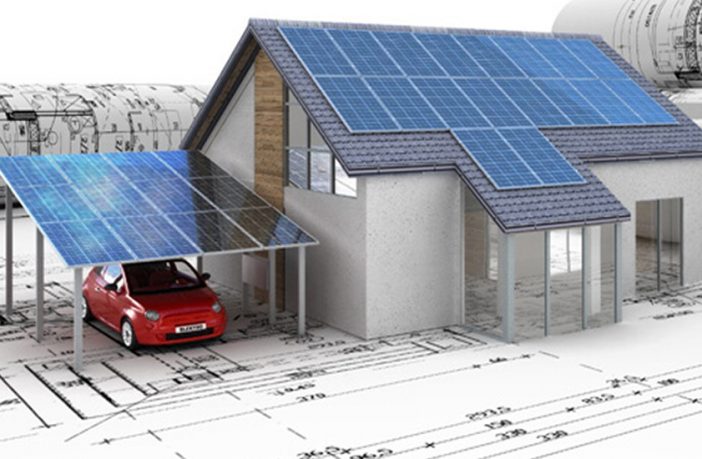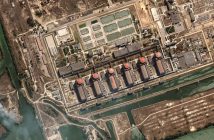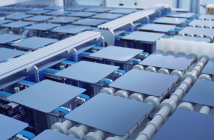Distributed generation can directly serve loads behind-the-meter but they can also make use of existing public network infrastructure to supply off-takers that are not co-located with the energy plant.
A new study commissioned by the South African Wind Energy Association (SAWEA) reflects on opportunities for corporates, municipalities, and intensive power users looking for affordable and low carbon ways of securing electricity.
The report was launched yesterday at the Res4Med&Africa Regulatory Innovation Conference in Cape Town, examining 14 different scenarios in five different South African municipalities.
The report has revealed that the role of Distributed Generation Renewable Energy (DG-RE) in the South African electricity market is currently undervalued and that it has a significant role to play in supporting the delivery of clean, cost-effective and reliable power to South African businesses.
The study found that wind and solar systems embedded in distribution networks could reduce significant load on municipalities; lowering the price of electricity, preventing electrical interruptions, reducing losses and providing an effective and efficient contribution to resolving South Africa’s power crisis.
“Within the current regulatory environment, improvements in renewable energy technology and falling prices are not reaching consumers directly and quickly enough and it is within this context that the report should be considered,” says CEO of the South African Wind Energy Association, Brenda Martin.
Distributed generation refers to a variety of technologies that generate electricity at or near where it will be used, such as solar PV panels, wind and combined heat and power and may or may not make use of existing electricity infrastructure for distribution to customers.
“Distributed generation can directly serve loads behind-the-meter as we have seen increasingly in South Africa over the past years, but they can also make use of existing public network infrastructure to supply off-takers that are not co-located with the energy plant. This type of scheme presents a number of advantages at various levels, and this is what we wanted to better understand through the study,” explained Kevin Minkoff, chairperson of SAWEA’s Technical Working Group.
He said Eskom tariff increases and continued struggles only strengthened the business case for DG-RE plants and the role these could play in supporting the sustainable delivery of power. Read more: Wind industry commits to contribute to socio-economic transformation
The report also highlights opportunities for investors. “This is an exciting time for current and prospective investors in the growing South African renewable energy market,” said Martin.
She added: “This is an important piece of work for entities interested in investment other than utility-scale as it reveals opportunities and potential routes for corporate PPAs (power purchase agreements) to step forward to become part of the solution to SA’s power woes by relieving pressure on the grid.”
Minkoff explains that PPAs support the purchase of electricity at an agreed price for an agreed period, typically 10-20 years. Instead of buying power directly from utilities (typically state-owned as in South Africa), several businesses are now beginning to consider how to purchase electricity from independent generators, as well as investing in generation assets themselves – within the strict limits of the current regulatory framework.
“PPAs have economic and environmental advantages,” says Martin, adding that large multinationals are beginning to apply their sustainability pledges to their global supply chains and data centres, which has led to a significant uptick in corporate PPAs globally.
“However, in South Africa, current regulations are restricting the uptake of corporate PPAs. To support growth of the industry, the SAWEA report calls for regulatory reforms to allow for direct PPAs between municipalities and energy intensive users and details how this could provide security of supply to heavy industry at lower tariffs,” said Martin.
“It important for local municipalities and utilities to revise planning methods, devise new technical specifications and update commercial arrangements.” she added.
Investing in DG-RE plants can help corporates to meet environmental targets, giving them an instrument to evidence compliance with increasing climate change reporting and corporate governance requirements.
Eskom will also benefit from DG-RE projects as the loss of revenue is more than offset by a reduction in the cost of distribution. Additionally, the practice of “wheeling”, whereby renewable energy plants pay a fee to use the national grid to transport the electricity from the production site to the end user can also benefit the state power utility.
“While government has reaffirmed its commitment to renewable energy and private sector investment in renewable projects there is still much to be done to make these commitments a reality,” said Martin.
“This report confirms the potential of DG-RE in the South African market and offers practical suggestions as to realising these. Renewable energy is increasingly being accepted as the way of the future. We hope this report will make a substantial and meaningful contribution to the growth of the sector in South Africa,” the CEO added
Author: GBA News Desk











